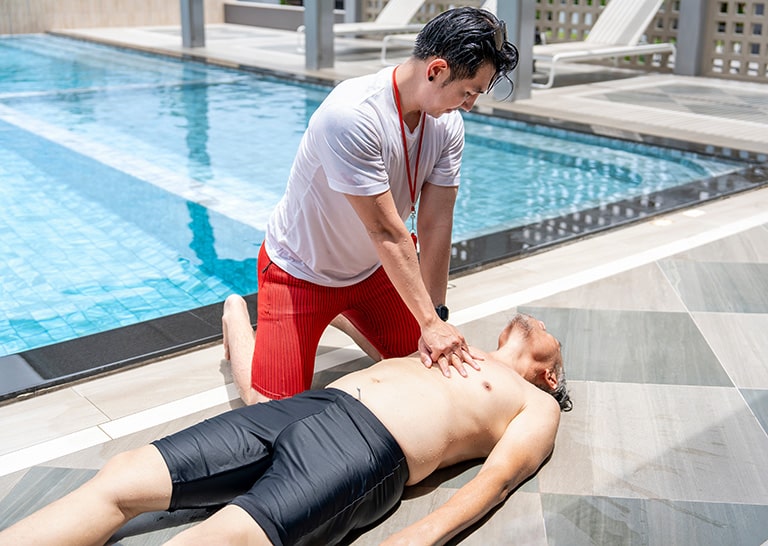Knowing how to perform CPR can mean the difference between life and death in an emergency. However, there are many facts about CPR and just as many myths that people believe. Understanding the truth about CPR and its importance can help you act confidently if you ever need to assist someone.
Here are five key CPR important facts and common myths.
1. Fact: CPR Increases the Chances of Survival
When someone experiences a sudden cardiac arrest, every second counts. CPR helps maintain blood flow to the brain and other vital organs, keeping the person alive until professional help arrives. According to CPR statistics, immediate chest compression during cardiac arrest can double or even triple the chances of survival.
For every minute that passes without CPR, a person’s chance of survival decreases by 10%. By starting CPR right away, you’re actively saving a life.
2. Myth: Only Medical Professionals Should Perform CPR
Some people hesitate to perform CPR, thinking it should only be done by healthcare professionals. This is far from true. Anyone, even without formal training, can perform hands-only CPR to assist a person whose heart stops beating.
Hands-only CPR involves delivering firm, consistent chest compressions at a rate of 100 to 120 compressions per minute. You don’t need to be CPR certified to help in an emergency. In fact, most cardiac arrests occurring outside hospitals are handled by bystanders. Acting quickly, even as a layperson, can save lives.
3. Fact: Good Samaritan Laws Protect You
One of the most harmful CPR myths is the fear of being sued for attempting to help. Thankfully, most states in the United States have Good Samaritan laws. These laws protect people who act in good faith to assist in an emergency.
If you attempt CPR to the best of your ability, you are unlikely to face legal consequences. This protection encourages more people to step up and help during emergencies, knowing they are legally safe.
4. Myth: CPR Can Restart a Heart
It’s a common misconception that CPR restarts a stopped heart. In reality, CPR’s main purpose is to maintain blood flow and oxygen to the brain and vital organs until a defibrillator or medical assistance is available.
An automated external defibrillator (AED) is the tool that delivers a shock to restart the heart during a heart attack or cardiac arrest. CPR alone keeps the person stable and buys time for the AED or emergency responders to arrive.
5. Fact: Compression-Only CPR Works
Many people think CPR must include rescue breaths, but compression-only CPR can be just as effective in certain situations. According to experts, chest compressions alone are sufficient for most adult cardiac arrest victims.
- Compression-only CPR is especially recommended for bystanders who may not feel comfortable giving rescue breaths.
- It’s quick, easy to remember, and highly effective at maintaining blood flow to vital organs.
- Rescue breaths are still recommended for children, infants, and drowning victims, but for adults, hands-only CPR is a lifesaver.
By focusing on chest compressions, even untrained bystanders can help save a life during an emergency.

Common CPR Myths Debunked
Here’s a quick look at some other CPR myths:
- Myth: You need formal training to perform CPR.
- Truth: While being CPR certified is ideal, untrained individuals can still perform hands-only CPR effectively.
- Myth: You can hurt someone by doing CPR incorrectly.
- Truth: While broken ribs are a possibility, it’s better to act and attempt CPR than do nothing at all.
- Myth: CPR always saves lives.
- Truth: CPR doesn’t guarantee survival, but it significantly increases—double or triple—the chances.
The Importance of Being CPR Certified
While anyone can perform basic CPR, taking a course and becoming CPR certified is a great way to feel confident and prepared. Certification courses teach you how to:
- Use an automated external defibrillator (AED).
- Perform CPR on adults, children, and infants.
- Respond to cardiac arrests occurring in different environments.
These courses are designed for everyone, from lay rescuers to medical professionals. Being certified not only provides peace of mind but ensures you’re ready to act when every second counts.
Saving Lives Starts with You
CPR is one of the most important skills you can learn. Whether it’s maintaining blood flow, keeping someone alive until help arrives, or using an automated external defibrillator, your actions can make a life-or-death difference. By understanding these facts about CPR and dispelling common myths, you’re already taking the first step in being prepared for emergencies.
Don’t wait until it’s too late—consider becoming CPR certified today and equip yourself with the knowledge to handle cardiac emergencies. Saving lives starts with learning, and the life you save could be someone you love.

